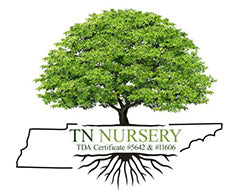Enhancing Your Landscape With Fleabane Daisy
Landscaping is an art form that allows us to transform outdoor spaces into stunning and harmonious environments. Whether you have a sprawling garden, a cozy backyard, or a small balcony, the proper selection of plants can bring life, color, and vibrancy to your landscape.
One such plant that can add natural beauty and charm is the Fleabane Daisy (Erigeron speciosus). Its delicate flowers, resilient nature, and numerous benefits make it an excellent choice for landscaping projects. In this article, we will explore the captivating features of the plant and how it can enhance your landscape.
Utilizing Fleabane Daisy
Native to North America, this lovely wildflower is admired for its daisy-like flowers and slender stems. The plant typically grows up to two feet tall and forms a clump-like habit, making it perfect for borders, rock gardens, or as a ground cover. Its botanical name, Erigeron, is derived from the Greek words "eri," meaning early, and "geron," meaning old man, referring to the plant's ability to bloom early and its hairy stems.
One of the primary reasons for incorporating Fleabane Daisies into your landscape is their gorgeous flowers. The daisy-like blooms feature numerous slender petals surrounding a vibrant yellow center, creating an eye-catching display. The flowers come in shades of pink, lavender, or white, adding a touch of elegance to any garden. The delicate nature of the flowers makes them perfect for creating a soft, romantic ambiance or a cottage-style garden.
Fleabane Daisy Benefits
Hardy and Resilient: Another advantage of the plant is its hardiness and ability to thrive in various conditions. It is well-suited to temperate climates and can tolerate both sun and partial shade. Once established, the plant is relatively drought-tolerant, making it a low-maintenance addition to your landscape. Its adaptability to different soil types, including well-drained soil or clay, further adds to its versatility. They are also known for attracting pollinators such as bees and butterflies, contributing to the ecological balance of your garden.
Landscaping Ideas: Now that we understand the appealing qualities of the plant, let's explore some creative landscaping ideas to incorporate this charming plant into your outdoor space:
a. Borders and Edging: The compact growth habit of the plant makes it an excellent choice for creating borders and edging in your garden. Planting them along pathways, driveways, or garden beds can add a touch of softness and natural beauty to the overall landscape design.
b. Rock Gardens: They are well-suited for rock gardens because they tolerate poor soil conditions. Plant them amidst rocks and boulders, allowing their colorful flowers to contrast with the rugged textures, creating a visually appealing composition.
c. Cottage Gardens: Create a picturesque cottage garden by combining them with other cottage-style plants like lavender, roses, and delphiniums. Their soft pastel hues and dainty flowers will contribute to a traditional cottage garden's romantic and nostalgic feel.
d. Container Gardening: If you have limited space or a small balcony, consider planting them in containers. Choose pots of appropriate size and place them strategically to add a pop of color and interest to your outdoor living area.


